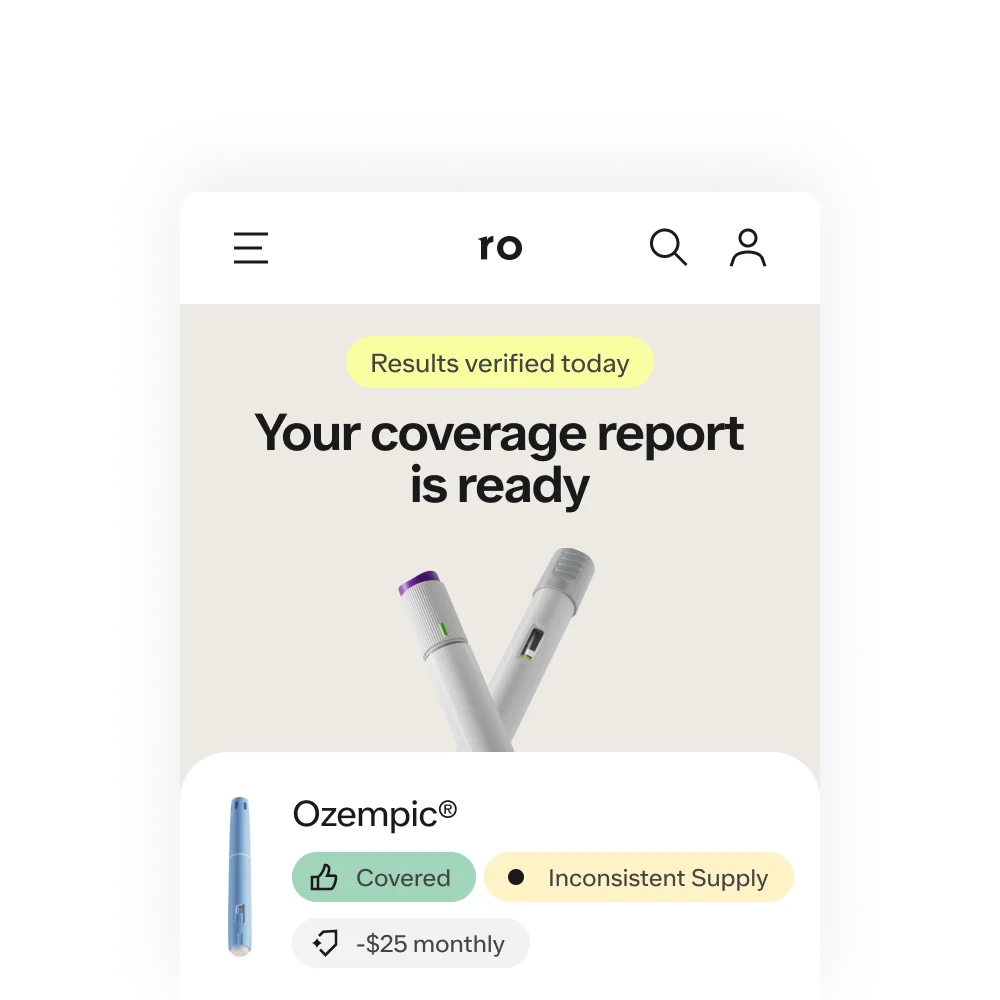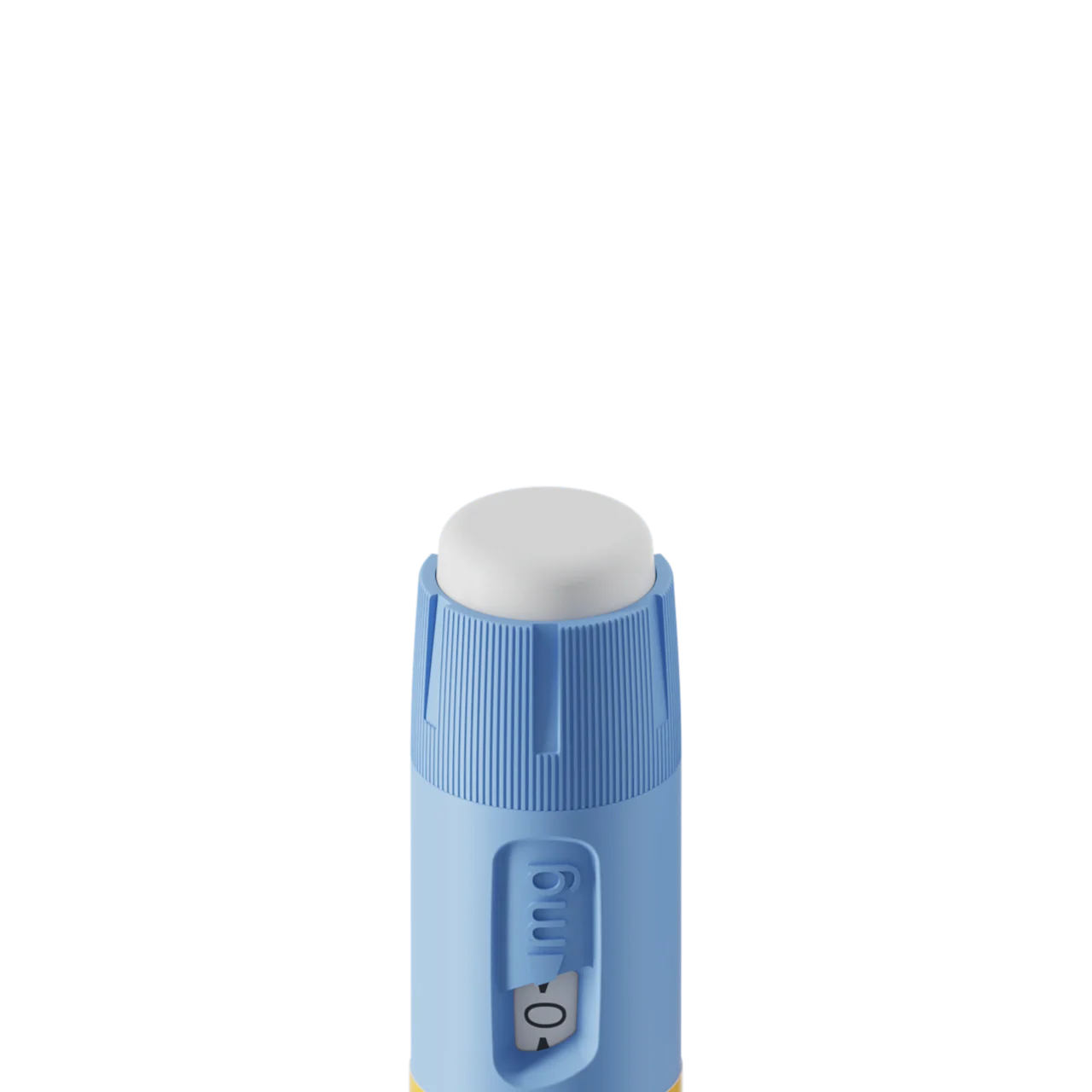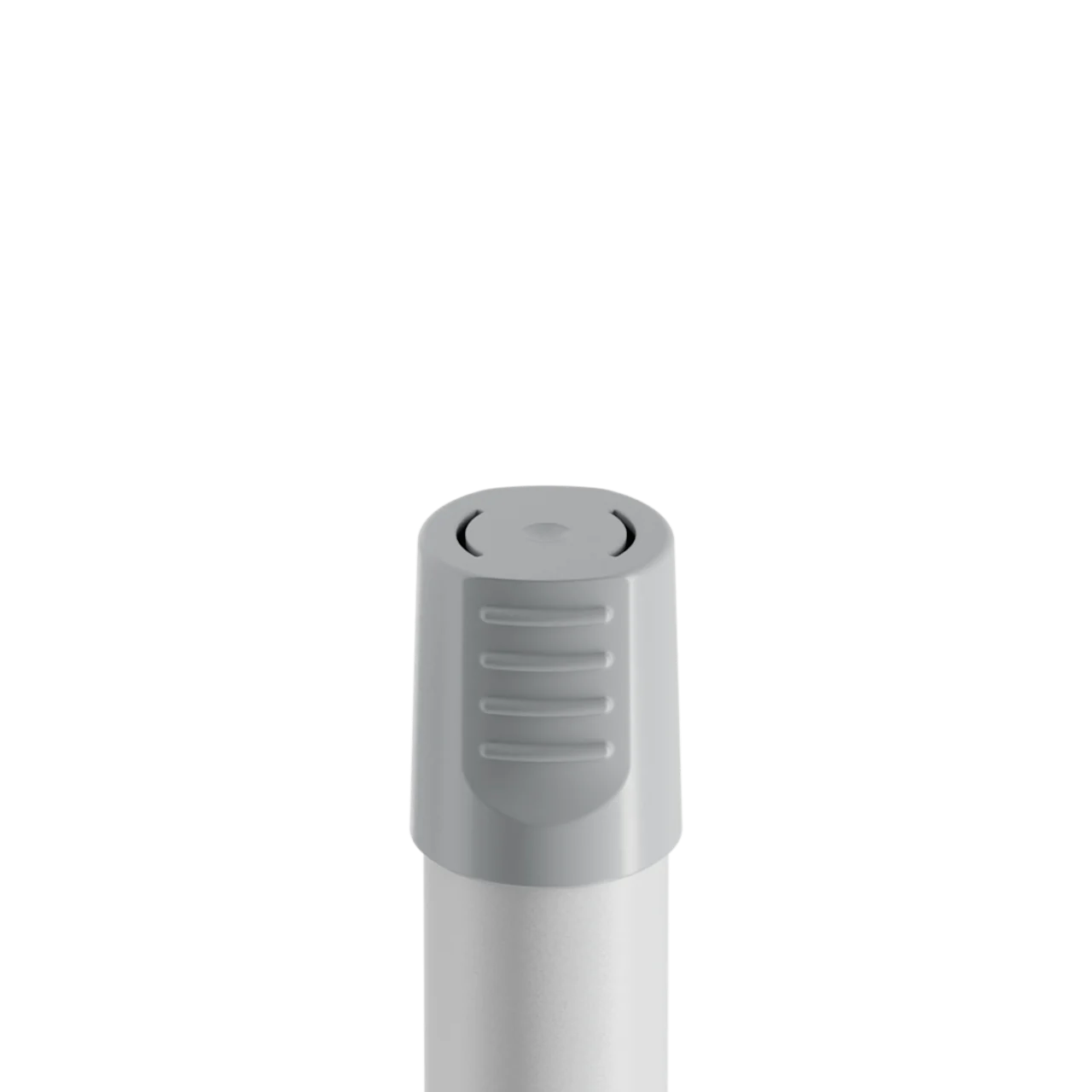Key takeaways
Semaglutide is indicated to treat type 2 diabetes, reduce the risk of heart attack and stroke in people with obesity or overweight, and to help lose weight and assist with chronic weight management. It’s available as brand-name drugs Ozempic, Wegovy, and Rybelsus.
Common side effects of semaglutide include nausea, vomiting, diarrhea, constipation, and abdominal discomfort, most of which lessen with time. However, serious side effects like pancreatitis or hypoglycemia require immediate medical attention.
Managing side effects involves dietary and lifestyle adjustments, such as eating bland foods, staying hydrated, and exercising regularly. For persistent or severe symptoms, consulting a healthcare provider is essential.
Here's what we'll cover
Key takeaways
Semaglutide is indicated to treat type 2 diabetes, reduce the risk of heart attack and stroke in people with obesity or overweight, and to help lose weight and assist with chronic weight management. It’s available as brand-name drugs Ozempic, Wegovy, and Rybelsus.
Common side effects of semaglutide include nausea, vomiting, diarrhea, constipation, and abdominal discomfort, most of which lessen with time. However, serious side effects like pancreatitis or hypoglycemia require immediate medical attention.
Managing side effects involves dietary and lifestyle adjustments, such as eating bland foods, staying hydrated, and exercising regularly. For persistent or severe symptoms, consulting a healthcare provider is essential.
Semaglutide is a GLP-1 medication approved by the US Food and Drug Administration (FDA) that controls blood sugar levels in people with type 2 diabetes, reduces the risk of heart attack and stroke in people with heart disease and type 2 diabetes or obesity, and promotes weight loss in people with overweight and obesity.
The drug’s most common side effects are digestive in nature, including nausea, diarrhea, vomiting, and constipation. While many semaglutide side effects tend to subside with time, it’s good to be aware of what’s expected, what’s not, and what could be a sign of something serious.
Read on to learn what side effects you can expect when taking semaglutide.
How long do semaglutide side effects last?
For most people, semaglutide side effects last a few weeks to a few months, depending on how your body reacts to the medication. To reduce these side effects, you will start on a low dose and work your way up.
You will likely start noticing semaglutide side effects within the first week to month of taking the drug. For most people, side effects are most intense during the first few months of treatment and when increasing your dose.
All forms of semaglutide—including Ozempic, Wegovy, and Rybelsus—typically follow a dose titration schedule. Your healthcare provider will prescribe a lower starting dosage and then gradually increase your dosage over a period of 5–20 weeks. This gradual increase in dosage is designed to keep side effects manageable as your body gets used to the medication.
As time goes on, semaglutide’s side effects should become less frequent and intense. For example, in one study, around 20% of people taking Ozempic reported nausea within the first five weeks. Around eight months later, fewer than 2% were still reporting the symptom.
What exactly are the side effects of semaglutide? Read on to learn more.
What are the side effects of semaglutide?
As a GLP-1 receptor agonist, semaglutide mimics GLP-1, a gut hormone that helps regulate your appetite and release insulin and glucagon. Your body naturally produces GLP-1 after you eat. GLP-1 then directs your pancreas to release more insulin and inhibit glucagon production so your blood sugar stays within a healthy range. GLP-1 also sends satiety signals to your brain when you’re full.
While these mechanisms can be helpful for diabetes control and weight loss, they can also cause side effects.
The most common side effects of semaglutide in adults include:
Vomiting
Diarrhea
Abdominal pain
Constipation
Headache
Fatigue
Indigestion
Dizziness
Bloating
Belching
Flatulence
Hypoglycemia (in people with type 2 diabetes)
Heartburn (gastroesophageal reflux disease)
When it comes to semaglutide side effects, everyone’s experience can be different. But you can probably expect at least some digestive side effects, given the medication’s impact on your gastrointestinal system. Nausea is the most commonly reported side effect, and roughly one-quarter to one-half of people experience nausea, vomiting, diarrhea, abdominal pain, and/or constipation. Typically, these digestive side effects range from mild to moderate, are most intense when ramping up your dose, and go away with time as your body gets used to semaglutide.
Less common side effects of semaglutide can include hair loss, dysgeusia (changes in taste, such as food tasting metallic or bitter), or a rash or discomfort at the injection site. In clinical trials, 3% or fewer people experienced these side effects.
In rare cases, semaglutide can cause serious side effects that require medical attention, including:
Pancreatitis (inflammation of the pancreas)
Diabetic retinopathy (vision loss or damage)
Severe hypoglycemia (low blood sugar)
Increased heart rate
Kidney problems
Gallbladder problems
An allergic reaction
Depression or suicidal thoughts
If you start to notice signs of any of the above—including difficulty breathing or swallowing, severe rash or itching, feeling faint, changes in your vision, or severe stomach pain—stop taking semaglutide and contact a healthcare provider immediately.
Finally, semaglutide has been linked to the development of thyroid tumors in rats. While it is not known if semaglutide has the same effect in humans, people with a personal or family history of medullary thyroid carcinoma or multiple endocrine neoplasia syndrome type 2 (MEN 2) should not take the medication.
How to treat each side effect of semaglutide
As mentioned above, semaglutide’s side effects are usually most pronounced when you are beginning treatment and increasing your dose. With time, as your body gets used to the medication, side effects should lessen in intensity and frequency. In the meantime, here are some tips for managing the side effects you may experience.
How to manage nausea on semaglutide
Nausea is the most common side effect of semaglutide, reported by 16% to 44% of people taking the medication. But it lessens with time: After about eight months of taking semaglutide, fewer than 2% of people still experience nausea.
Nausea is most likely to occur when starting treatment with semaglutide and when increasing your dose. Follow these tips to try and get ahead of it.
Avoid eating greasy, fried, salty, and sweet foods. Instead, opt for bland, watery, and low-fat foods, such as crackers, toast, rice, and soup. Ginger and apples can sometimes relieve nausea.
Eat slowly, taking care to savor your food.
Eat smaller meals, more often, rather than three big meals throughout the day.
Avoid lying down after you eat. Instead, get some fresh air outdoors if possible.
Stay hydrated with ice-cold water and other clear drinks. Avoid alcohol, caffeine, and carbonated beverages.
When you feel nausea coming on, try to sit still. Too much movement may make you feel worse.
How to manage vomiting on semaglutide
Thankfully, vomiting is less likely to occur than nausea. However, it is still one of the most common side effects of semaglutide, affecting between 5% to 24% of people, depending on their dosage. As with nausea, vomiting is most likely to occur when you first start taking semaglutide and when increasing your dose.
If you experience vomiting while taking semaglutide, make sure to rehydrate by drinking water, as vomiting can be very dehydrating. Limit alcohol, caffeine, and carbonated beverages. Instead, stay hydrated with clear, cold drinks (e.g. H2O) and water-rich foods, such as soup, popsicles, and Jello. Ginger may also help relieve or prevent vomiting.
If you’re frequently vomiting or feeling nauseated, you can also try to avoid drinking beverages during meals. Instead, drink water 30–60 minutes before or after you eat. As with nausea, eat smaller meals more frequently as opposed to larger meals spread apart.
It’s important to note that vomiting can be an early warning sign of pancreatitis, a serious inflammation of the pancreas that requires medical attention. If your vomiting is accompanied by severe abdominal pain that does not go away or radiates to your back, contact your healthcare provider immediately.
How to manage diarrhea on semaglutide
Diarrhea affects between 8.5% to 30% of people taking semaglutide. Like the other gastrointestinal side effects of semaglutide, diarrhea is most common when beginning treatment and increasing your dose.
Diarrhea is also dehydrating, so it’s important to refuel with fluids and electrolytes when experiencing this side effect. Drink plenty of water. Gatorade or diluted fruit juice are other potential options. Just take care to avoid beverages with too much sugar or caffeine.
Similar to nausea, adopting a bland diet can help you manage this side effect of semaglutide. Temporarily limiting your fiber intake or eating low-fiber foods like the following can help firm up your stool.
Bananas
Toast
Oatmeal
White rice
Applesauce
Soup
Broth
You’ll also want to avoid dairy, coffee, alcohol, and sweeteners like xylitol until things firm back up.
How to manage abdominal pain or bloating on semaglutide
Around 6% to 20% of people experience abdominal pain or discomfort, including bloating, as a side effect of semaglutide. These symptoms may result from some of the other discomforting side effects of semaglutide, such as nausea, vomiting, and diarrhea. Treating those side effects with the aforementioned tips may help.
Other ways to manage abdominal pain on semaglutide include:
Avoiding chewing gum
Avoiding gas-producing foods, such as cabbage, beans, lentils, Brussels sprouts, milk, dairy, and sweeteners like fructose or sorbitol until you know which foods sit well with you
Eating more slowly
Stopping smoking
Stomach pain typically ranges from mild to moderate and goes away with time. If it becomes persistent and severe, it could be a sign of pancreatitis. You may also experience vomiting, and the pain may radiate towards your back. If you experience any of these symptoms, contact your healthcare provider immediately.
How to manage constipation on semaglutide
Keep in mind that you may have fewer bowel movements simply because you are eating less due to the appetite-suppressing effect of semaglutide. Think of it as “less goes in, less comes out.” Fewer bowel movements can be normal (even as few as three per week), but experiencing hard stool, difficulty passing stool, bloating, abdominal pain, or incomplete evacuation would be considered constipation.
Up to one in four people may experience constipation while on semaglutide. While side effects like nausea, vomiting, and diarrhea typically go away within a week, constipation can last much longer—for nearly two months, according to a study of people taking a 2.4 mg dosage of semaglutide for weight loss.
If you experience constipation while taking semaglutide, try the following:
Drink plenty of water
Exercise regularly
Eat high-fiber foods like fruits, vegetables, and grains
You can also ask your healthcare provider whether fiber supplements or laxatives could be helpful for you.
How to manage headache on semaglutide
Up to 14% of people experience headaches while taking semaglutide, usually on higher dosages of the medication, but also 10% of people just taking placebo also experienced headaches in the clinical trials. Headaches can stem from various causes, including dehydration, stress, and skipping meals, which you may do if you’re feeling nauseous from semaglutide.
Over-the-counter pain relievers such as Tylenol (acetaminophen) and Advil (ibuprofen) can help relieve headaches. Staying hydrated can also help prevent them.
Headache can be a sign of hypoglycemia, or low blood sugar, which can be serious for people with type 2 diabetes. Other signs of hypoglycemia include:
Dizziness
Blurred vision
Anxiety
Fast heartbeat
Sweating
Slurred speech
Hunger
Confusion
Feeling jittery or irritable
Shakiness
Weakness
How to manage fatigue on semaglutide
About one in 10 people experience fatigue, including a lack of energy or weakness, while taking semaglutide. Fatigue can be a common side effect of many medications, as well as changes in routine, which may occur when taking semaglutide. For example, you might be exercising more or adjusting what you eat, either of which counts as a change in your routine.
To reduce fatigue, start by getting enough sleep every night. Quality of sleep matters just as much as quantity. Some people with excess weight may have sleep disorders, like obstructive sleep apnea, which significantly reduces your quality of sleep such that you do not feel well-rested in the morning. Following a well-balanced diet, staying hydrated, and exercising regularly—all of which are recommended when taking semaglutide—can also help boost your energy.
Stress can also contribute to fatigue, so you might want to consider making changes to add some relaxation to your life as well. This may involve reworking your schedule at work or school or taking up yoga or meditation.
How to manage indigestion and heartburn on semaglutide
Around 5–9% of people may experience indigestion or heartburn as a side effect of semaglutide. Certain foods can trigger this feeling, including some of the foods you may want to avoid to relieve nausea anyway: greasy, spicy, fried, or acidic foods. You may also want to avoid caffeine and carbonated beverages.
Research suggests that adopting a balanced diet, particularly one high in non-citrus fruits and whole grains (such as the Mediterranean diet), can help relieve heartburn.
In addition to what you eat, certain behaviors can increase your likelihood of experiencing indigestion or heartburn on semaglutide. Some tips to reduce heartburn include:
Avoid lying down after you eat
Have your last meal at least a few hours before bed
Be mindful of fullness cues, and do not force yourself to eat when you’re not hungry
Keep track of and limit foods that trigger reflux
How to manage dizziness on semaglutide
Fewer than 10% of people experience dizziness as a side effect of semaglutide. Dizziness can be caused by several things, including dehydration from vomiting and diarrhea. If you feel dizzy, take it easy when getting up after sitting or lying down. Get up slowly, sit before you stand, and have something you can hold on to nearby. Also make sure you’re eating enough and staying hydrated with water.
Dizziness can also be a sign of low blood sugar (hypoglycemia). If you are taking other medications to manage your type 2 diabetes, such as metformin or insulin, you may have an increased risk of experiencing hypoglycemia. Know the warning signs, which include:
Headache
Blurred vision
Anxiety
Fast heartbeat
Sweating
Slurred speech
Hunger
Confusion
Feeling jittery or irritable
Shakiness
Weakness
How to manage gas and burping on semaglutide
You may notice increased belching and flatulence when taking semaglutide. Up to 7% of people experienced that while taking this medication in clinical trials.
To reduce gassiness while on semaglutide, try:
Drinking plenty of water
Eating more slowly to reduce the amount of air you swallow
Avoiding carbonated beverages
Avoiding dairy, especially if you are lactose intolerant
Avoiding beans or cabbage
Not chewing gum
Taking a short 10–15-minute walk after you eat
Rx weight loss with Ro
Get access to prescription weight loss medication online
How to manage hypoglycemia on semaglutide
Semaglutide lowers blood sugar, so taking it in combination with insulin or an insulin secretagogue, such as sulfonylureas, can increase the risk of experiencing hypoglycemia in people with type 2 diabetes. Your healthcare provider may lower your dose of insulin and other diabetes medications to make this less likely. But hypoglycemia is still a possible side effect of semaglutide that people with type 2 diabetes should be aware of.
For example, in clinical trials of Ozempic, up to 30% of people who were also taking insulin at the same time experienced signs of low blood sugar, including 10.7% who experienced severe hypoglycemia. (By contrast, less than 4% of people who were taking Ozempic without insulin experienced low blood sugar.) In clinical trials of Wegovy, just over 6% of people experienced hypoglycemia—nearly three times as many as those taking a placebo.
Signs of low blood sugar include:
Dizziness
Headache
Blurred vision
Fast heartbeat
Sweating
Slurred speech
Hunger
Confusion
Feeling jittery or irritable
Shakiness
Weakness
If you start to notice signs of hypoglycemia, check your blood sugar. If it’s below 70 mg/dL, consume 15 grams of carbs. Any of the below sources are good options:
4 ounces of juice or non-diet soda
1 tablespoon of sugar, syrup, or honey
Hard candies, jellybeans, or gumdrops
3 or 4 glucose tablets
1 dose of glucose gel
It can be helpful to keep at least one of these options with you, such as in your purse or car. If your hypoglycemia is severe, seek emergency medical treatment.
Bottom line: semaglutide side effects
The most common side effects of semaglutide are primarily digestive. Nausea, diarrhea, vomiting, constipation, and abdominal pain are the most frequently reported side effects of semaglutide. They are generally mild to moderate, most intense when starting or increasing the dose, and usually subside with time.
While rare, serious side effects of semaglutide require emergency medical treatment. These may include pancreatitis, severe hypoglycemia, and kidney or gallbladder problems. If you experience symptoms such as severe abdominal pain, vision changes, or difficulty breathing, seek medical attention immediately.
Making small lifestyle changes or adjustments to your diet or eating habits can help relieve many side effects. Strategies such as staying hydrated, exercising more, and avoiding greasy, spicy, fried, or acidic foods can help alleviate side effects like nausea, diarrhea, and vomiting.
As your body gets used to semaglutide, many side effects may go away on their own. For most people taking semaglutide, side effects are manageable and lessen with time. If your side effects are severe, or they don’t seem to be going away, contact your health provider.
DISCLAIMER
If you have any medical questions or concerns, please talk to your healthcare provider. The articles on Health Guide are underpinned by peer-reviewed research and information drawn from medical societies and governmental agencies. However, they are not a substitute for professional medical advice, diagnosis, or treatment.
Ozempic Important Safety Information: Read more about serious warnings and safety info.
Wegovy Important Safety Information: Read more about serious warnings and safety info.
GLP-1 Important Safety Information: Read more about serious warnings and safety info.
References
Blundell, J., Finlayson, G., Axelsen, M., et al. (2017). Effects of once-weekly semaglutide on appetite, energy intake, control of eating, food preference and body weight in subjects with obesity. Diabetes, Obesity & Metabolism, 19(9), 1242–1251. doi: 10.1111/dom.12932. Retrieved from https://www.ncbi.nlm.nih.gov/pmc/articles/PMC5573908/
Centers for Disease Control & Prevention (CDC). (2024). Treatment of Low Blood Sugar (Hypoglycemia). Retrieved from https://www.cdc.gov/diabetes/treatment/treatment-low-blood-sugar-hypoglycemia.html
Chao, A. M., Tronieri, J. S., Amaro, A., et al. (2022). Clinical Insight on Semaglutide for Chronic Weight Management in Adults: Patient Selection and Special Considerations. Drug Design, Development and Therapy, 16, 4449–4461. doi: 10.2147/DDDT.S365416. Retrieved from https://www.ncbi.nlm.nih.gov/pmc/articles/PMC9807016/
Davies, M., Færch, L., Jeppesen, O. K., et al. (2021). Semaglutide 2·4 mg once a week in adults with overweight or obesity, and type 2 diabetes (STEP 2): a randomised, double-blind, double-dummy, placebo-controlled, phase 3 trial. Lancet (London, England), 397(10278), 971–984. doi: 10.1016/S0140-6736(21)00213-0. Retrieved from https://pubmed.ncbi.nlm.nih.gov/33667417/
Frías, J. P., Auerbach, P., Bajaj, H. S., et al. (2021). Efficacy and safety of once-weekly semaglutide 2.0 mg versus 1.0 mg in patients with type 2 diabetes (SUSTAIN FORTE): a double-blind, randomised, phase 3B trial. Lancet Diabetes & Endocrinology, 9(9), 563–574. doi: 10.1016/S2213-8587(21)00174-1. Retrieved from https://pubmed.ncbi.nlm.nih.gov/34293304/
Gorgojo-Martínez, J. J., Mezquita-Raya, P., Carretero-Gómez, J., et al. (2022). Clinical Recommendations to Manage Gastrointestinal Adverse Events in Patients Treated with Glp-1 Receptor Agonists: A Multidisciplinary Expert Consensus. Journal of Clinical Medicine, 12(1), 145. doi: 10.3390/jcm12010145. Retrieved from https://pmc.ncbi.nlm.nih.gov/articles/PMC9821052/
Heidarzadeh-Esfahani, N., Soleimani, D., Hajiahmadi, S., et al. (2021). Dietary Intake in Relation to the Risk of Reflux Disease: A Systematic Review. Preventive Nutrition and Food Science, 26(4), 367–379. doi: 10.3746/pnf.2021.26.4.367. Retrieved from https://www.ncbi.nlm.nih.gov/pmc/articles/PMC8747955/
Jensterle, M., Rizzo, M., Haluzík, M., et al. (2022). Efficacy of GLP-1 RA approved for weight management in patients with or without diabetes: A narrative review. Advances in Therapy, 39(6), 2452–2467. doi: 10.1007/s12325-022-02153-x. Retrieved from https://www.ncbi.nlm.nih.gov/pmc/articles/PMC9063254/
Lee, S. & Lee, D. Y. (2017). Glucagon-like peptide-1 and glucagon-like peptide-1 receptor agonists in the treatment of type 2 diabetes. Annals of Pediatric Endocrinology & Metabolism, 22(1), 15–26. doi: 10.6065/apem.2017.22.1.15. Retrieved from https://www.ncbi.nlm.nih.gov/pmc/articles/PMC5401818/
Marso, S. P., Bain, S. C., Consoli, A., et al. (2016). Semaglutide and Cardiovascular Outcomes in Patients with Type 2 Diabetes. New England Journal of Medicine, 375(19), 1834–1844. doi: 10.1056/nejmoa1607141. Retrieved from https://www.nejm.org/doi/full/10.1056/nejmoa1607141
Marx, W., Kiss, N., & Isenring, L. (2015). Is ginger beneficial for nausea and vomiting? An update of the literature. Current Opinion in Supportive and Palliative Care, 9(2), 189–195. doi: 10.1097/SPC.0000000000000135. Retrieved from https://pubmed.ncbi.nlm.nih.gov/25872115/
Maselli, D. B. & Camilleri, M. (2021). Effects of GLP-1 and Its Analogs on Gastric Physiology in Diabetes Mellitus and Obesity. Advances in Experimental Medicine and Biology, 1307, 171–192. doi: 10.1007/5584_2020_496. Retrieved from https://pubmed.ncbi.nlm.nih.gov/32077010/
MedlinePlus-a. (2022). Abdominal bloating. Retrieved from https://medlineplus.gov/ency/article/003123.htm
MedlinePlus. (2016). Constipation. Retrieved from https://medlineplus.gov/constipation.html
MedlinePlus-a. (2023). Dehydration. Retrieved from https://medlineplus.gov/dehydration.html
MedlinePlus-b. (2023). Dizziness. Retrieved from https://medlineplus.gov/ency/article/003093.htm
MedlinePlus-c. (2023). Fatigue. Retrieved from https://medlineplus.gov/ency/article/003088.htm
MedlinePlus-d. (2023). Gas. Retrieved from https://medlineplus.gov/gas.html
MedlinePlus-b. (2022). Gas – flatulence. Retrieved from https://medlineplus.gov/ency/article/003124.htm
MedlinePlus-e. (2023). Semaglutide injection. Retrieved from https://medlineplus.gov/druginfo/meds/a618008.html
MedlinePlus-c. (2022). When you have nausea and vomiting. Retrieved from https://pmc.ncbi.nlm.nih.gov/articles/PMC8294388/
Mitsuhashi, S., Ballou, S., Jiang, Z. G., et al. (2018). Characterizing Normal Bowel Frequency and Consistency in a Representative Sample of Adults in the United States (NHANES). The American Journal of Gastroenterology, 113(1), 115–123. doi: 10.1038/ajg.2017.213. Retrieved from https://pubmed.ncbi.nlm.nih.gov/28762379/
National Institute of Neurological Disorders and Stroke. (2023). Headache. Retrieved from https://www.ninds.nih.gov/health-information/disorders/headache
Nemeth, V. & Pfleghaar, N. (2022). Diarrhea. StatPearls. Retrieved from https://www.ncbi.nlm.nih.gov/books/NBK448082/
Novo Nordisk-a. (2023). Ozempic PI. Retrieved from https://www.novo-pi.com/ozempic.pdf
Novo Nordisk-b. (2023). Ozempic® Side Effects | Ozempic® (semaglutide) injection. Retrieved from https://www.ozempic.com/how-to-take/side-effects.html
Novo Nordisk-c. (2023). Semaglutide 2.4 mg reduces the risk of major adverse cardiovascular events by 20% in adults with overweight or obesity in the SELECT trial [Press release]. Retrieved from https://www.novonordisk.com/content/nncorp/global/en/news-and-media/news-and-ir-materials/news-details.html?id=166301#
Novo Nordisk-d. (2023). Wegovy PI. Retrieved from https://www.novo-pi.com/wegovy.pdf
Rubino, D. M., Greenway, F. L., Khalid, U., et al. (2022). Effect of weekly subcutaneous semaglutide vs daily liraglutide on body weight in adults with overweight or obesity without diabetes: The STEP 8 randomized clinical trial. JAMA, 327(2), 138–150. doi: 10.1001/jama.2021.23619. Retrieved from https://jamanetwork.com/journals/jama/fullarticle/2787907
Rybelsus. (2023). Prescribing Information | RYBELSUS® (semaglutide) tablets 7 mg or 14 mg. Retrieved from https://www.rybelsus.com/prescribing-information.html
Shu, Y., He, X., Wu, P., et al. (2022). Gastrointestinal adverse events associated with semaglutide: A pharmacovigilance study based on FDA adverse event reporting system. Frontiers in Public Health, 10, 996179. doi: 10.3389/fpubh.2022.996179. Retrieved from https://www.ncbi.nlm.nih.gov/pmc/articles/PMC9631444/
Smits, M. M., & Van Raalte, D. H. (2021). Safety of Semaglutide. Frontiers in Endocrinology, 12, 645563. doi: 10.3389/fendo.2021.645563. Retrieved from https://pmc.ncbi.nlm.nih.gov/articles/PMC8294388/
Wharton, S., Calanna, S., Davies, M., et al. (2022). Gastrointestinal tolerability of once-weekly semaglutide 2.4 mg in adults with overweight or obesity, and the relationship between gastrointestinal adverse events and weight loss. Diabetes, Obesity & Metabolism, 24(1), 94–105. doi: 10.1111/dom.14551. Retrieved from https://www.ncbi.nlm.nih.gov/pmc/articles/PMC9293236/
Wilding, J., Batterham, R. L., Calanna, S., et al. (2021). Once-weekly semaglutide in adults with overweight or obesity. The New England Journal of Medicine (NEJM), 384(11), 989. doi: 10.1056/NEJMoa2032183. Retrieved from https://www.nejm.org/doi/10.1056/NEJMoa2032183

















